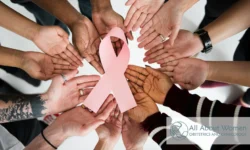
So many rumors spread around the internet (and sometimes go viral) that aren’t true at all. One “disease” gaining a lot of attention lately is something called “blue waffle disease.”
As a group of experienced OBGYNs, we want to make sure all women know that blue waffle disease does NOT exist. The fake STD was completely made up by someone on the internet and is not an actual disease.
It’s never clear exactly where these rumors start, but much of the false information put out there has pictures with it that have been altered (i.e. photoshopped) in some way.
Now that you know blue waffle is a fake STD, let’s look at what the rumors are saying are common symptoms.
Symptoms of the fictitious blue waffle disease
The name “blue waffle” came from a slang term for vagina (“waffle”). One of the supposed symptoms that this fake disease causes is turning your vaginal area blue. There is no actual known STD that causes any part of your genitals (whether male or female) to turn blue.
Some other supposed symptoms of this fake STD are much like other actual STDs:
- Itching and/or burning in the vaginal area
- Vaginal discharge that has a strong or bad odor
- Sores or lesions in the vaginal area
- Pain during or after sex
Most of the rumors surrounding blue waffle disease also say that this particular STD only affects women. This piece of information is also false because STDs affect both men and women.
Real STD symptoms to watch for
While blue waffle disease is not an actual STD, there are several real and dangerous STDs out there. Some of the most common STDs are chlamydia, gonorrhea, HPV and genital herpes.
Aside from the blue coloration, these real STDs can have almost the same symptoms as the fake blue waffle disease. Don’t ignore them if you notice any of following symptoms:
- Burning and/or itching in your vaginal area
- Pain during or after sex
- Rectal pain or bleeding
- Abdominal pain
- Discharge that is discolored and/or has a strong odor
- Any bumps, scabs, sores or blisters in your vaginal area
- Fever and body aches
Stay in the know about safe sex and STDs
It’s important for you to research and stay informed on the real and common STD threats. Don’t assume what you read on the internet is true without first asking your doctor.
STDs are often preventable when you practice safe sex. This means that you use some type of barrier (such as a condom or dental dam) to keep infections or viruses from passing from one person to another. These barriers aren’t foolproof, though, so you still need to watch out for signs of possible STDs.
If you suspect you have an STD or have questions about them, talk to your gynecologist right away. Letting an infection go can cause more health issues and makes it harder to treat.


